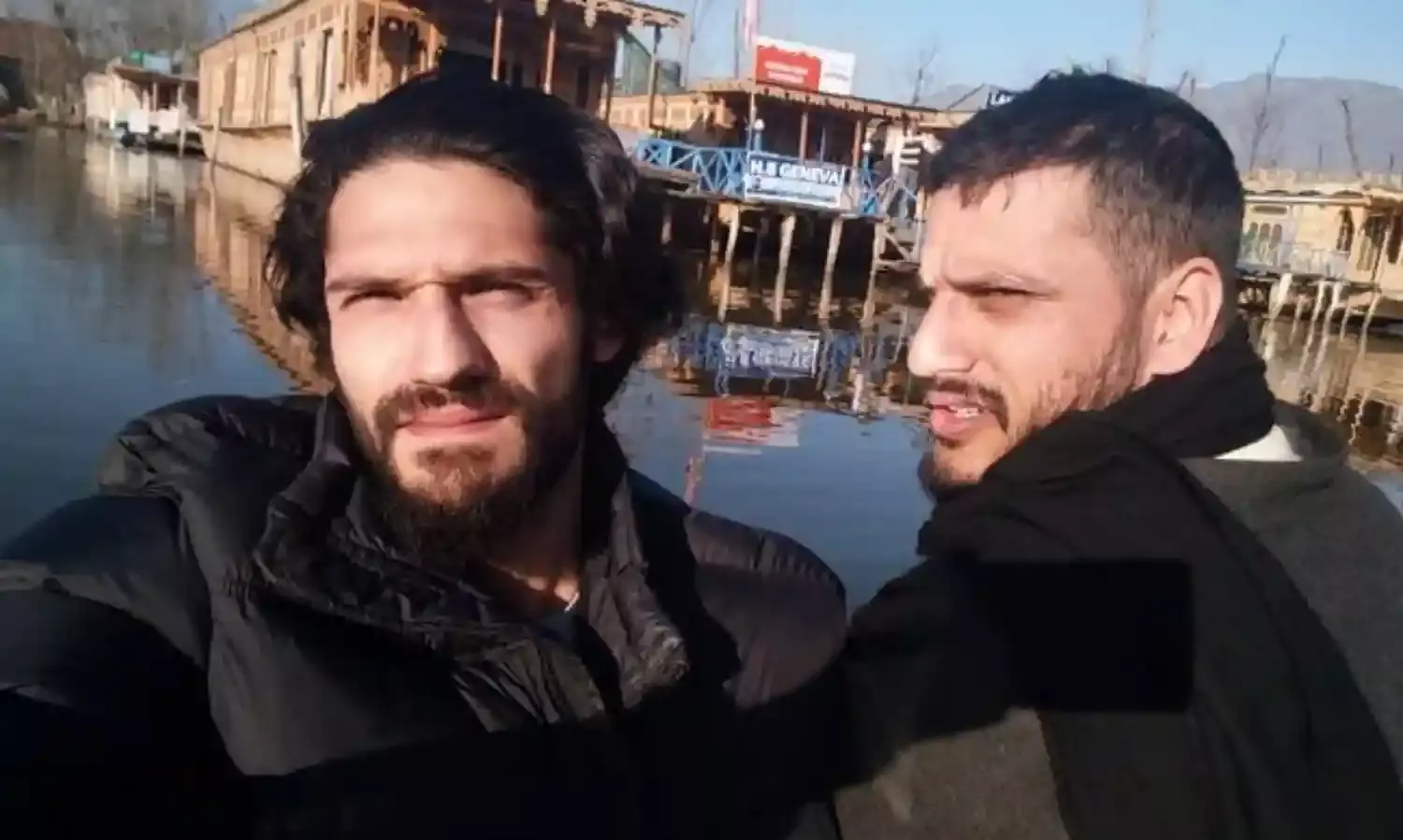'Where Hope Ends, Art Begins'
Art as escape from a grim reality

Inqalaab-o-Inqalaab-o-Inqalaab. Singing these fervent lines with whole audience humming with him, Ali's performance discernibly evokes intense feelings in a city cafe in Srinagar filled beyond its capacity, predominantly by young energetic faces. Ali Saifuddin is one among several youngsters in Kashmir who uses art as a medium to oppose 'normalised' state subjugation.
Turmoil in Kashmir has led to the emergence of a new generation which finds itself at loggerheads with the state and its narrative. Several youngsters have picked up the gun and there is a continuous surge in number of youth joining militancy, especially post Burhan Wani's death. Amidst all the unrest there is a new crop of youngsters who have resorted to art as a means to counter the state and its narrative. Not astonishingly, these artists have become highly popular among the conflict sensitized youth in the Valley who see them depicting ---peacefully of course---their stories. Stories of anger. Stories of defiance. Stories of resistance.
As the state prohibits any form of protest and even resorts to stringent surveillance on social media platforms, there is literally no space for the youth to vent their frustration. Many end up picking guns, many more stones, but amidst all the chance medley, a large section of youngsters seek refuge in art, to relieve themselves, to protest and to show they exist.
Art acts as antidote to the collective grievance and helplessness. In the words of Leo Tolstoy "Art is not, as some metaphysicians say, the manifestation of some mysterious idea of God; it is not, as some aesthetical psychologists say, a game in which man lets off his excess of stored up energy; it is not the expression of man's emotions by external signs; it is not production of pleasing objects; and above all, it is not pleasure; but it is a means of union among men, joining them together in the same feelings."
What brings most youth to art is the state of gehenna that conflict brings about. Being themselves witness of death, destruction, oppression and subjugation, there is a sense of despondency among youth and that is exactly what sparks it.
"Where hope ends. Art begins" says Khawaja Musadiq, a young but highly popular poet, who writes what he calls 'poems of resistance'. Khawaja's poems which have a strong appeal in Kashmir and the prevailing popular movement, have become megahits on social media platforms, particularly among the literary aware youth populace.
"Art is always a form of resistance to a certain ideology or act and my poems reflect same. There is a need to express and vent it out especially in the present trying times. Though I am not sure about its success in creating a counter narrative but it does certainly bring like-minded people together" . Khawaja feels that poetry has provided him a channel to get out of the conflict and to get conflict out of him. In one of his most famous lines Musadiq laments
"In my country,
roses that grow
never reach the hands of lovers.
But just the skin
of graves".
Known for his colloquial style, award winning singer and poet Mohammad Muneem who along with Kashmir's first rapper MC Kash became famous for 'Listen my brother' feels that apart from political implications art helps to understand the compassionate side of a human being".
Adnan Naqeeb another singer reiterates that he finds no logical way out of the stagnant political conundrum in Kashmir and the only way to deviate the mind from the idea of violent retribution is to take refuge in some form of art.
Transcending boundaries and invoking metaphors of pain, art as a means to depict the day to day miseries of Kashmir has not been confined to the local artists. Juxtaposing images of violence and war with everyday life, Rollie Mukherjee, a Baroda based artist, for more than a decade has been using visual imageries through canvas and paint to highlight the Kashmir cause.
Rollie's engagement with the issues of Kashmir as an artist started with the work titled ‘will o the wisp’ executed in the year 2007. It talks about the cold blooded hegemonic state apparatus which reduces life to nothingness. Rollie continues to paint the lives of Kashmiris which she feels are under constant subjugation and remembers the anecdotes and stories of torture and suppression shared by Kashmiri men who used to visit her home for selling carpets and clothes in her childhood, which stirred artistic endeavours in her.
"Much of the knowledge about Kashmir in India and around the world even today is imagined and manufactured rather than based on reality. This imagination is partly due to the image of Kashmir as a picture postcard scenic beauty reproduced through Bollywood films and national television channels, which reduces the place to just a physical geography, bereft of human stories. Kashmiris, Muslims in particular are prisoners of the image constructed by the Indian state and the private media. These rumours and images of Kashmir, its people, its problems have created more prejudices and distortions rather than genuine knowledge about the people, place and its history." she says.
It is not that state has spared art and accepted it as a medium of dissent. Attempts to narrate stories of conflict-inflicted pain through creative means to have faced the brunt of state curbs. Various film and documentary screenings have been banned even in premier academic institutions like Kashmir University. Besides many artists in the past including Ali and MC Kash were forced to go underground as they feared police action. But in a strife torn region like Kashmir what keeps art alive is the spirit of it. Over and above, how can 'Art resistance' be an art, without resistance?


